Sell like Amazon: 7 examples of automating personal trigger e-mails that you can run today

You have already heard many times (and we have told many times) that marketing automation helps to warm up leads, increase conversion and revenue, without spending money on advertising.
One of the reports of the Lenskold Group states that 63% of companies that are ahead of their competitors use automated marketing. DemandGen in the study of the B2B segment states that 67% of marketers see at least a ten-percent increase in sales opportunities after preliminary preparation of the lead, a key automated marketing feature.
Now I understand why companies are so interested in this topic. Google Trends celebrates the annual worldwide growth in the number of “marketing automation” requests, which has been going on for a decade.
')
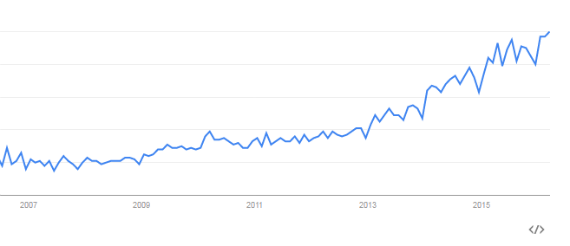
2007-2016 query “marketing automation”
However, when it comes to introducing automated marketing, it can be difficult to decide where to start.
In this post, we will tell you about the 7 secrets of automated mailing lists that you can implement in a few days on most marketing automation platforms (and how to do this with Carrot Quest ):
- Personalized call to action;
- Educational mini-courses;
- Re-sending letters;
- Returning users;
- Automatic list reduction;
- Check after purchase;
- Rate users by points.
1. Personalized call to action
Most likely, most marketers in your field send the same email to each person on the list. Active users receive the same information as the leads, and leads - the same as the left users.
Personalized call to action turns this strategy on its head.
When you launch personalized messages, your users receive content that changes depending on their location in the sales funnel. This means that everyone will receive information about possible further actions.
Suppose you are a marketer of a SaaS service.
You could add PS to a weekly newsletter that would be different for leads (PS Try the service for free for 14 days) and existing users (PS Learn more about our PRO fare).
Even if 90% of your information in the mailings is the same, personal calls to action significantly increase conversion.
2. Educational mini-courses
Many marketers today are overly concerned about expanding their contact base. Although there is another KPI that marketers are eager to get even more than turning site visitors into subscribers - turning subscribers into paying customers.
B2B marketers argue that the most useful metric, testifying to the success of marketing automation is the degree of conversion.
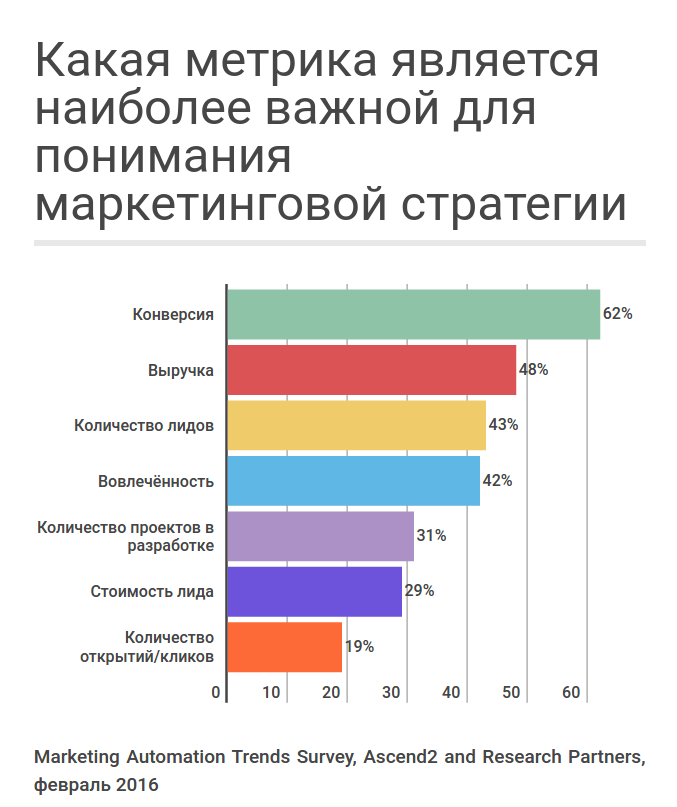
There is no single approach to converting subscribers into customers. But one of the options to be heard, to earn the trust and educate your customers yourself is to create an authoritative mini-course and send it by e-mail.
Mini-courses are an example of drip marketing, where lessons are sent daily for 5 or 7 days to potential customers interested in a topic. Naturally, a person who is interested in your lessons will want to know about the product that you are offering.
In addition, email lessons have a hidden powerful advantage. They teach people to open and read your letters. The importance of this property cannot be overemphasized.
When you add to your email list with traditional lead magnets, like free e-books, for example, you notice that your open rates drop after a few emails. The truth is that sometimes people do not expect or do not want to receive news from you. They just wanted a free book.
Mini-courses change the situation.
To get lessons from the course, people need to read your letter. This teaches users to open, click on links and respond to your emails. Isn't this the essence of creating any lead magnet?
For B2B marketers, DemandGen in his research showed that heated leads in 50% of cases are more ready to buy and in 33% are cheaper per 1 lead. Try teaching your users for 5 or 7 days and see if your conversion will increase.
All new Carrot Quest users get 4 emails with lessons. These messages not only tell about the main functions of the service and recommendations for setting it up, but also provide general information that helps users better understand marketing automation and communication with the user. Here is an example of such a letter:

3. Resending Emails
Imagine that you can receive up to 30% more discoveries on every letter you send. This means that the news about your webinar or the launch of a new product will receive 30% more email traffic.
Re-sending will help to achieve this. Here's how to do it.
The next time you send a very important email, wait a couple of days, and then make a list of those who did not open it. Change the subject of the letter and send the same letter to those who missed the first message. This re-posting can yield 30% more discoveries (and a two-digit increase in conversion). And most marketers don't do that.
4. Returning users
According to BI Intelligence , online retailers lose $ 4 trillion in abandoned baskets! Worse, 63% of this revenue could be recovered.
Over the years, online stores have come to realize that abandoned baskets are a big problem. Despite this, not all marketers use return strategies for departed users.
Suppose someone looked at your prices, service, or the terms of the demo and left without buying. He was obviously interested in your service or product, and if you have retargeting running, he will see your advertisement.
Remarketing may help, but pursuing users within 5 minutes after they leave will convert them a hundred times better than the next hour.
Here come to the aid of messages that return the user to the landing page a few minutes (or seconds) after they left the page.
Note: Using pop-up windows or chat messages, the Carrot Quest allows you to remind of an abandoned basket even to users who have not left their email address.
Suppose you watched cameras on Amazon and did not buy anything. Such a letter will come to you in a few days:
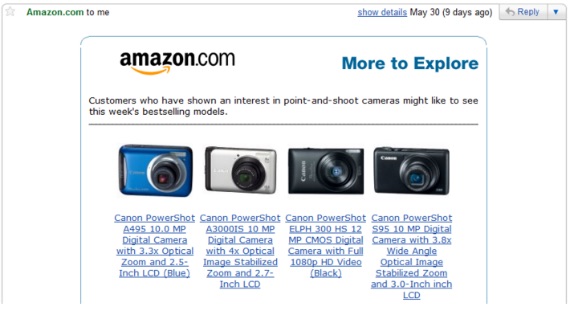
When it comes to creating your own campaign, you have several options to tackle. In general, a good strategy will be to address the problems that may have led the user to leave your site.
You can write something like:
- I lead our SEO team. When will it be convenient for you to hold a consultation on improving your organic traffic and revenue?
- We offer free delivery in Russia. Follow the link to make a purchase right now.
- What keeps you from trying our product now?
Focus on helping and be ready to answer any questions you may have.
If you have a high user LTV, this strategy can provide significant ROI, attracting new “quiet” users at the perfect time for this.
5. Automatic list reduction
Know users who never open your newsletter? Perhaps they harm your business more than you can imagine. The truth about inactive users is that low involvement hurts your issue in all aspects.
Mail services look at who you send messages to, how often, whether there are complaints about insults, the percentage of opening emails and clicks done. All of these factors determine your reputation among postal services and influence whether your emails fall into the subscribers ’boxes.
This means that even if people do not mark your letters as spam, but just do not open them, this may affect the delivery of messages to interested subscribers.
You can solve the problem by adding a trigger that will mark users who have not opened your last 10 emails. You can then send them a message to make sure they want to continue receiving messages from you.
Crunchbase succeeded in this matter. Such a message helps them keep the list of subscribers clean and keep high issuance for all their customers.
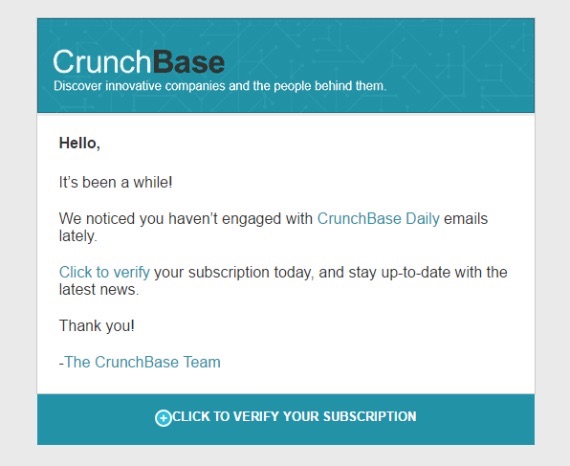
Translation: “Hi! Much time has passed! We noticed that you didn’t respond to CrunchBase Daily emails lately. Click to confirm your subscription and stay up to date with the latest news. Thank! The CrunchBase Team. ”
6. Check after purchase
This campaign is simple and unexpectedly powerful.
After you have received a new user, send him a friendly message after 14 days: “Hey, it's been 14 days, I just want to know how things are going.”
Such letters have become popular in SaaS. But it is striking how few businesses in other areas (consulting, online courses and commerce) contact users and find out if they are satisfied with the purchase.
Sean Fioritto, author of the e-book Sketching With CSS , used posts after the sale and received more than 100 reviews about his book. When readers bought the book, Sean sent a simple letter in 14 days:

Translation: “Hey! You bought the book Sketching with CSS a couple of weeks ago. One of the advantages of buying a book from the author in, hmm, in me :) I answer every letter and I love it when readers write to me. How are things going? ”.
When Sean received positive responses, he responded and asked permission to use quotes for feedback. Most users easily agreed. So they gave a bunch of social evidence that he could use in his further campaigns.
Creating a similar message with the help of Carrot Quest is quite simple, but the benefits, as you can see, are very small. Add the user action “bought a book”, select it as a trigger in the message setup and set a deferral of 14 days.

According to Marketing Metrics , the possibility of selling to a user who has already made a purchase once is 60-70%, while the probability of selling to a new customer is only 5-20%.
Use post-purchase messages to warm up your users and create a basis for additional sales.
7. Rate users by points.
Do you give points to your users?
Evaluation of user activity on a point system separates automated marketing from traditional marketing software. You can assign points to users depending on behavior (for example, opened or clicked on an email, visited a page with prices twice a week, downloaded a guide, or any other action on your site that you can track).
When a contact reaches a predetermined value (say, 100 points), the user enters a special segment.
Depending on your business, you may want to do something with this loyal user:
- appoint a personal consultant;
- send a sales-oriented drop mailing;
- Add to the campaign interaction through Facebook.
The possibilities are endless.
You can also send them an automatic message, as Beachhead does:

Translation: “Hello, Zach! Just wanted to say hello. I see you have downloaded a lot of content lately, and I want to know if I need any more of my help. Thank. Dan".
The Beachhead consultant evaluates users on a point basis to reach out to valuable potential customers who use their content. If during the week someone downloads 5 of 6 brochures and looks at the prices on the site, you can be sure that they are interested in your service.
Customizing custom events in the Carrot Quest, you can also set any number of points for targeted actions (the more important the action, the more points). Points are recorded in the properties of users and, having reached a certain value, trigger a pre-created trigger distribution. This way you are always in touch with your most loyal users.
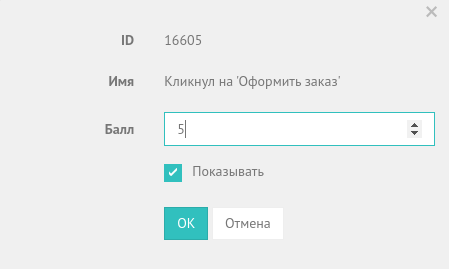
Points allow you to automate direct letters to users, so they have to themselves, even when you relax.
findings
More and more marketers are moving away from random mailings and sending more targeted, relevant automatic messages.
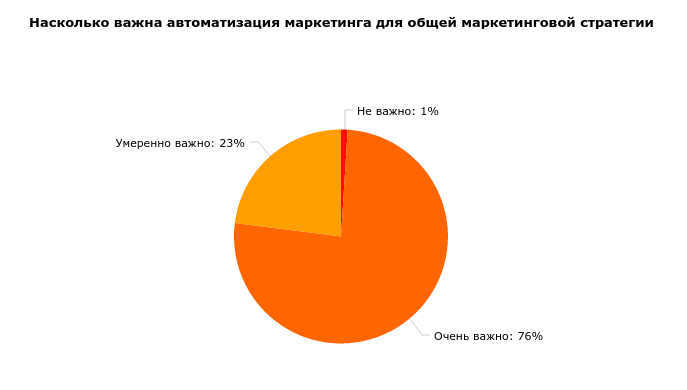
According to Ascend2 , 76% of companies in 2016 consider marketing automation “very important” for the overall marketing strategy (11% more than in 2015).
The problem for most marketers is that automation can be confusing. While SMM results and content marketing are immediately visible, mailing automation often runs in the background, making it difficult to evaluate.
With these 7 tips, we hope you will have a clearer idea of what is possible and some specific steps to increase conversion and marketing automation.
With pleasure, the team of Carrot Quest , a service that automatically collects information about each visitor to your site and helps them to purchase, both manually and automatically.
Based on blog.kissmetrics.com
Source: https://habr.com/ru/post/312304/
All Articles